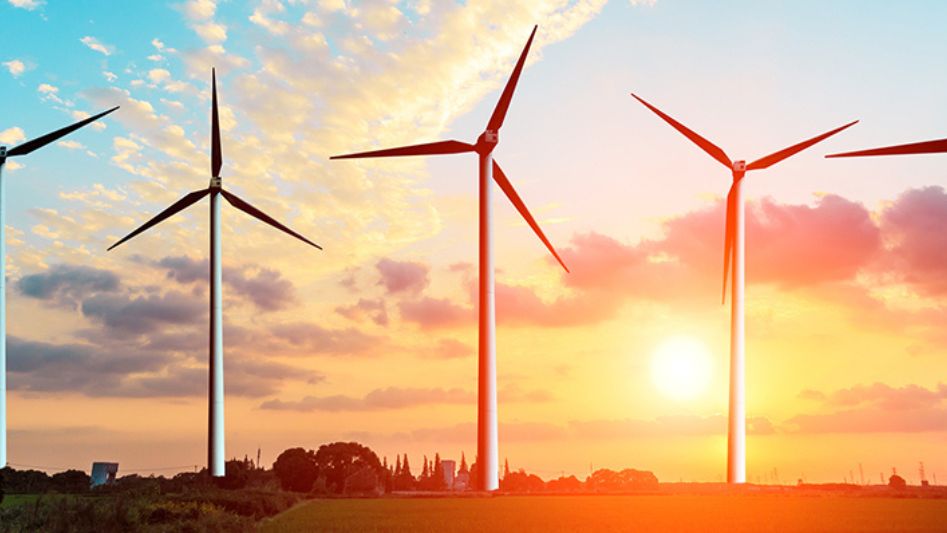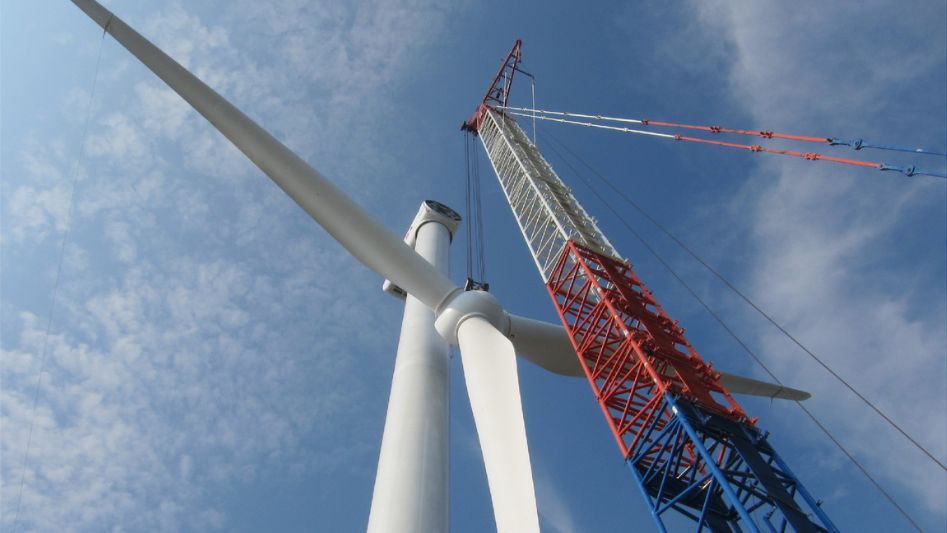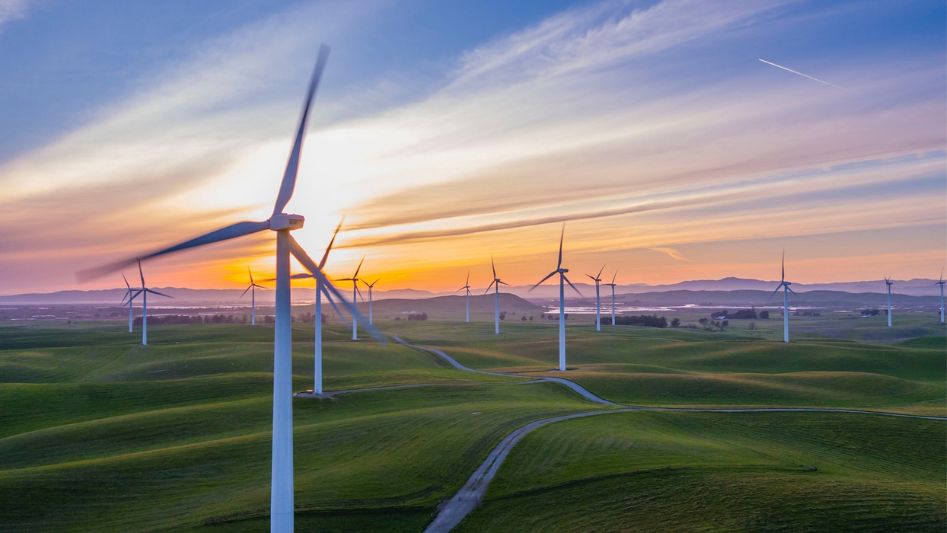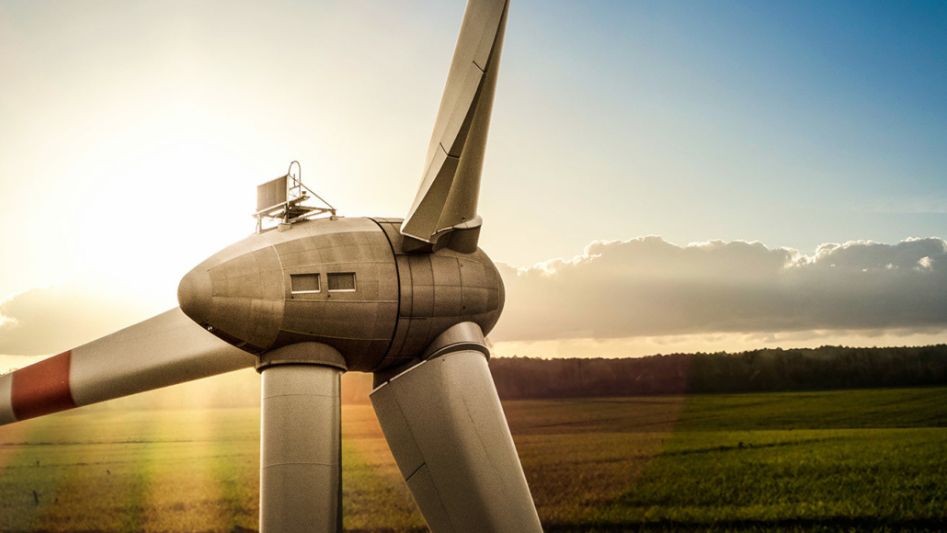In the pursuit of sustainable and renewable energy sources, wind energy has emerged as a powerful contender, harnessing the natural force of wind to generate electricity. Wind turbines, the towering structures that have become synonymous with this green energy revolution, are at the forefront of modern technology, efficiently converting wind’s kinetic energy into usable power. As the world grapples with the challenges of climate change and energy security, understanding the intricate technology behind wind turbines is essential. This article delves into the technology driving wind turbine power, exploring their design, working principles, benefits, and future prospects.
Table Of Content
We invite you to read: “Advancing Offshore Wind Technology: A New Era of Renewable Energy”

Design and Components
Wind turbines are sophisticated machines designed to capture the kinetic energy of wind and convert it into electrical energy. These structures comprise several key components, each contributing to the overall efficiency and effectiveness of the system.
- Rotor Blades: The iconic three-blade design is the most common configuration for modern wind turbines. These aerodynamic blades capture wind energy and convert it into rotational motion.
- Hub and Nacelle: The hub connects the rotor blades to the nacelle, which houses the turbine’s critical components. The nacelle contains the generator, gearbox, and control systems.
- Generator and Gearbox: The generator converts the rotational motion of the blades into electrical energy. It is often connected to a gearbox, which increases the rotational speed to optimize energy generation.
- Yaw System: Wind turbines are equipped with yaw systems that allow them to rotate and face into the wind. This ensures maximum energy capture as wind direction changes.
- Tower: The tower provides the height necessary to position the rotor blades at an optimal height above ground level, where wind speeds are higher and more consistent.
Working Principles
The technology behind wind turbines is grounded in the principles of physics, particularly the conversion of kinetic energy to mechanical energy and then to electrical energy.
When wind flows over the rotor blades, they experience lift and begin to rotate. This rotational motion is transmitted through the hub and nacelle to the generator. The generator converts the mechanical energy into electrical energy through electromagnetic induction. As the rotor spins within the magnetic field of the generator, an electric current is generated in the wires, which can then be harvested as electricity.
We invite you to read: “The Future is Wind-Powered: Advancements in Wind Turbine Technology”

Benefits of Wind Energy
Wind energy offers a multitude of benefits that make it an attractive alternative to fossil fuels:
- Renewable and Clean: Wind energy is entirely renewable, relying on the Earth’s natural wind patterns. It produces no direct emissions or pollution, making it a clean energy source that helps combat climate change.
- Reduced Greenhouse Gas Emissions: Wind power displaces the need for fossil fuel-based electricity generation, which results in a significant reduction in greenhouse gas emissions.
- Job Creation and Economic Growth: The wind energy sector creates jobs in manufacturing, installation, maintenance, and more, contributing to local and national economies.
- Energy Independence: Wind energy diversifies the energy mix, reducing dependence on imported fossil fuels and enhancing energy security.
Future Prospects and Challenges
The future of wind energy is promising, with ongoing advancements in technology and increasing global adoption. Research and development are focused on improving turbine efficiency, reducing costs, and enhancing energy storage solutions.
However, challenges remain. Wind energy’s intermittent nature requires robust energy storage systems to ensure a consistent power supply when the wind isn’t blowing. Additionally, concerns about the environmental impact on bird populations, noise pollution, and visual aesthetics need to be addressed for optimal integration into communities.
We invite you to read: “The Advancements in Wind Turbine Technology: Innovations and Trends”

Conclusion
Wind turbines are a technological marvel that exemplify the potential of renewable energy. Their ability to harness the power of the wind and convert it into clean electricity showcases the innovation driving the transition toward sustainable energy sources. As technology continues to evolve, wind energy will undoubtedly play a pivotal role in shaping a greener and more sustainable future for generations to come.
FAQs
How do wind turbines work?
Wind turbines work by utilizing the kinetic energy of wind to rotate rotor blades. This rotational motion is transmitted to a generator, which converts the mechanical energy into electrical energy through electromagnetic induction.
What are the benefits of wind energy?
Wind energy is renewable, clean, and reduces greenhouse gas emissions. It creates jobs, enhances energy independence, and contributes to economic growth while diversifying the energy mix.
What is the future of wind energy?
The future of wind energy looks promising, with ongoing advancements in technology. Research focuses on improving efficiency, reducing costs, and developing energy storage solutions to address its intermittent nature.
You May Also Like
- Blowing Away Myths: Debunking Common Misconceptions about Wind Turbines
- Economic Winds of Change: How Wind Turbines and Solar Panels Affect Local Economies
- Future-Proofing Energy: The Role of Wind Turbines and Solar Panels in Climate Resilience
- Winds of Prosperity: The Economic Benefits of Wind Power
- Blowing Towards Sustainability: Wind Energy Leading the Green Movement

